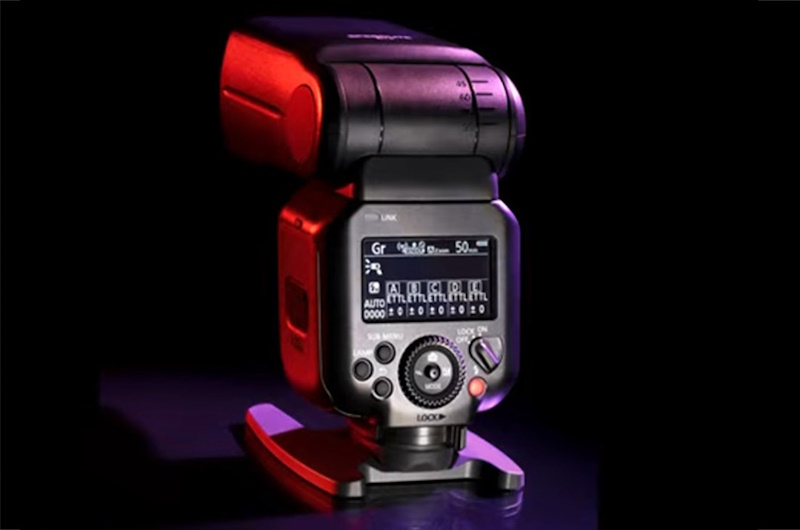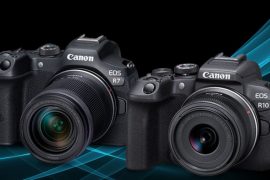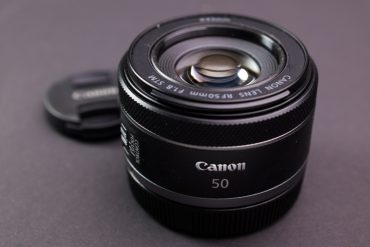Welcome to the world of photography, where the right equipment can transform a regular photo into something extraordinary. Amongst lenses and tripods, one often overlooked hero stands out: the finest camera flash.
Think about it: that perfect portrait or that indoor shot with vibrant colors – they all owe a debt to the humble camera flash. It’s not just about brightness; it’s about creating the perfect ambiance for your moments to shine. A top-quality flash is more than just an accessory; it’s a game-changer.
In this guide, we will explore the best camera flashes of 2023. We will delve into how these small devices make a big impact, elevating your photography to new heights. From understanding their standout features to uncovering their influence on your shots, get ready to find the flash that aligns with your vision. Let’s shed some light on what makes these flashes the ultimate companions for your camera!
Key Features to Look for in the Best Camera Flash
-
Power and Range:
The best camera flash should have adjustable power settings to suit different shooting conditions. It should be able to light up any environment without overpowering or underexposing your subjects.
Picture yourself capturing a wedding in a poorly lit location. Your camera flash should have enough power to light up the entire scene without losing any details or creating strong shadows. With adjustable power settings and a wide range, your flash effortlessly adjusts to different lighting conditions.
-
Compatibility:
Compatibility is an important aspect to consider. Your flash must be able to sync smoothly with your camera, regardless of whether you use a DSLR, mirrorless, or a specific camera brand. Make sure to select a flash that is specifically designed to work with your camera model to avoid any compatibility issues in the future. Having a flash that effortlessly syncs with your gear will allow you to concentrate on your creativity without any technical obstacles.
-
Advanced Features:
The top camera flashes come with advanced features that enhance your photography. Through The Lens (TTL) metering provides precise flash exposure, high-speed sync freezes fast-moving subjects, and wireless capabilities offer creative control over multiple flashes.
-
Durability and Reliability:
Invest in a camera flash that is durable and reliable for prolonged use. Look for sturdy build quality and reliable performance to ensure your flash remains a trusted companion throughout your photography journey.
-
Consider Your Photography Style and Preferences
Your personal photography style and preferences play a crucial role in choosing the best camera flash. If you’re into portrait photography, a flash with soft, diffused lighting might be your go-to for that flattering glow. For action shots or sports photography, high-speed sync capability becomes a game-changer, freezing moments with precision.
Consider how you prefer to work. Are you someone who enjoys experimenting with off-camera flash setups for creative lighting effects? In that case, a flash with robust wireless capabilities opens up a world of possibilities. Think about your shooting preferences and the type of scenes you usually capture to align your flash choice with your unique style.
The Top Picks: Reviews of 2023’s Best Camera Flashes
BEST BUDGET FLASH
1- Neewer TT560 Flash
Key Features
- Guide Number: 125′ at ISO 100
- Tilts Upward 90 Degrees
- Rotates 270 Degrees
- 8 Output Levels from 1/1 to 1/128
- Recycle Time: 0.1 to 5 Seconds
- Optical Slave with S1 and S2 Modes
- Runs on 4 AA Batteries
The TT560 Flash from Neewer is a straightforward speedlight that offers manual exposure control and a guide number of 125′ at ISO 100. It provides eight output levels ranging from full power down to 1/128. With its bounce and swivel capabilities, you can tilt the flash up to 90° upwards and rotate it 270°, allowing you to direct the light wherever you need it.
The flash also includes two built-in panels: a reflector card for filling in shadows when bouncing light upwards, and a wide-angle diffuser for softening the light.
One of the flash’s standout features is its connectivity options, which enable it to communicate with other flashes and serve as a secondary light source. It can function as an optical slave in two modes: S1 for instant sync and S2 for skipping a pre-flash.
If you prefer a wired connection, there is also a sync port available. The TT560 operates on four AA batteries and offers recycle times ranging from 0.1 to 5 seconds, depending on your power settings and the batteries used.
2- Nikon Speedlight SB-500
Key Features
- Compatible with Nikon i-TTL
- Guide Number: 79′ at ISO 100
- Coverage: 24mm (FX Format)
- LED Video Light with 3 Output Levels
- Tilts Upward 90°
- Rotates Left and Right 180°
- Commander Mode for Wireless TTL Control
- Recycle Time: 3.5 Seconds
- Slow, High-Speed,1st & 2nd Curtain Sync
- Runs on 2 AA Batteries
The SB-500 AF Speedlight from Nikon is a compact and portable unit that features an LED video light. Designed specifically for use with Nikon’s i-TTL metering system, this flash offers good power with a guide number of 79′ at ISO 100. While manual adjustments are not available, the flash output can be adjusted through the camera’s flash exposure compensation settings.
This unit provides wide coverage for a 24mm lens on FX-format full-frame cameras, and the 100 lux LED light offers quarter, half, and full power output levels, making it suitable for both video and close-up still photography.
In terms of versatility, the SB-500 can tilt upward 90° and rotate left and right 180°, allowing for excellent bounce and swivel capabilities. It can also function wirelessly as a commander unit on the D810 and D750, or as a remote slave for full compatibility with other cameras, flash units, and wireless flash controllers in Nikon’s Creative Lighting System. Additional features include slow, Auto FP high-speed, 1st, and 2nd curtain synchronization.
The SB-500 also transmits LED and flash color information to the camera, enabling optimal white balance settings. It operates on 2 AA batteries, providing a fast recycle time of as little as 3.5 seconds. A soft case and stand are included with the flash.
BEST MID-RANGE FLASH
3- Canon Speedlite 430EX III-RT
Key Features
- 2.4 GHz Wireless Radio Transmission
- Compatible with Canon E-TTL / E-TTL II
- Guide Number: 141′ at ISO 100 and 105mm
- Zoom Range: 24-105mm (14mm with Panel)
- Tilts Upward 90°
- Rotates 150° Right & 180° Left
- Multi Dial, Bounce Panel, & Color Filter
- Recycle Time: 0.1-3.5 Seconds
- High-Speed, 1st & 2nd Curtain Sync
- Runs on 4 AA Batteries
Canon’s mid-range Speedlite 430EX III-RT now includes a 2.4 GHz wireless triggering system with master and slave capabilities, bringing the radio flash capabilities from their flagship model. This flash unit, like its predecessor, has a guide number of 141′ at ISO 100 and 105mm, a zoom range of 24-105mm, and a wide panel that extends coverage to 14mm. Additionally, it offers enhanced bounce capabilities with the ability to rotate 150° right, 180° left, and tilt upwards 90°. The operation is made easier with a dot-matrix LCD and a Multi Dial for smooth menu settings adjustment.
The wireless flash system now includes a radio system, but you can still use optical slave transmission for more functionality. The 430EX III-RT has faster electronics, with a recycle time of 0.1 to 3.5 seconds and a Quick mode that shortens it to 2.5 seconds. It also has improved Flash Exposure Compensation and Light Distribution settings for precise adjustments. This compact unit is versatile, with high-speed sync modes and custom functions. It comes with a color filter and bounce adapter for adjusting the flash’s color temperature and brightness. It runs on 4 AA batteries.
4- Nikon Speedlight SB-700
Key Features
- Compatible with Nikon i-TTL
- Guide Number: 92′ at ISO 100 and 35mm
- Zoom Range: 24-120mm (12mm with Panel)
- Tilts from -7° to 90°
- Rotates Left & Right 180°
- Commander Mode for Wireless TTL Control
- Strobe Mode and 3 Illumination Patterns
- Recycle Time: 2.5-3.5 Seconds
- Slow, High-Speed, 1st & 2nd Curtain Sync
- Runs on 4 AA Batteries
The Nikon SB-700 AF Speedlight is a compact flash unit with a guide number of 92′ at ISO 100 and 35mm. It is designed for high-performance on-camera lighting and is compatible with both FX- and DX-format cameras. The flash works with the i-TTL system for automatic metering and can be used with Nikon’s Creative Lighting System for full control over your lighting setup. The auto zoom head has a coverage range of 24-120mm with FX-format cameras and can be extended to 12mm with the wide-angle diffusion panel.
The Speedlight offers complete bounce and swivel capabilities for various shooting situations. Users can tilt down to -7° and up to 90°, as well as rotate left or right 180° for full 360° coverage. Additionally, the SB-700 provides three different illumination patterns – standard, even, and center-weighted – to customize the light output according to your specific requirements.
To enable wireless master TTL functionality, the Speedlight features a Commander Mode. In this mode, users can access Advanced Wireless Lighting settings to control multiple off-camera flashes. These flashes can be set up in two groups (A, B) and one of four channels. The SB-700 also offers a convenient wireless control A:B ratio setting for quick setup and control of multiple remote flashes.
BEST FLASH OVERALL
5- Godox VING V860III
Key Features
- Built-In X Wireless Radio System
- Recycling 1.5 sec Full Power
- Guide Number: 197′ at ISO 100
- Battery Gives 480 Full-Power Flashes
- Flash Coverage: 20-200mm
- Wireless Master/Slave TTL Functionality
The Ving V860III TTL Li-Ion Flash Kit from Godox is an excellent choice for Canon cameras because of its power, speed, and integrated radio transmission. It is fully compatible with TTL systems and supports many advanced functions. The flash also features the Godox X wireless radio system, which allows for both master and slave TTL functionality from a distance. It is a powerful and versatile flash with a guide number of 197′ at ISO 100 and 200mm, and a zoom range of 20-200mm. The flash is powered by a rechargeable lithium-ion battery pack that allows for fast recharge and up to 480 full-power flashes. The Ving V860III also has full bounce flash capabilities, including tilting and rotation left and right. It supports high-speed sync, flash exposure compensation, 1st and 2nd curtain sync, and more. It can also function as an optical master or slave unit if needed.
6- Hahnel Modus 600RT Mk II
Key Features
- Compatible with Canon ETTL / ETTL II
- Guide Number: 190′ at ISO 100 and 200mm
- Tilts Upward 90°, with Bounce Panel
- Rotates Left & Right 360°
- 1.5 Second Recycle Time
- HSS, 1st & 2nd Curtain, Multi-Flash
- Included Rechargeable Li-Ion Battery
- 2.4 GHz Wireless Transmitter / Receiver
The Hahnel Modus 600RT MK II Speedlight for Canon Cameras is a versatile flash that offers various modes such as E-TTL / E-TTL II, manual, HSS, and stroboscopic flash. It is suitable for both single on-camera flash photography and complex multi-light setups. With a rechargeable lithium-ion battery pack, it provides up to 600 full-power flashes and has a faster recycle time compared to regular batteries. The built-in 2.4 GHz wireless connectivity allows for easy setup of remote flashes without the need for synch cords or bulky remotes. The intelligent optical slave system enables communication between multiple Modus speedlights. The tilting and pivoting head allows for flexible positioning, and the quick-lock shoe securely connects to the camera in seconds.
7- Canon Speedlite EL-5 (For Canon EOS R Series camera bodies)
Key Features
- 2.4 GHz Wireless Radio Transmission
- Guide Number: 197′ at ISO 100 and 200mm
- Runs on LP-EL Lithium-Ion Battery
- Modeling Lamp; Multi-Function Shoe
- Zoom Range: 24-200mm (14mm with Panel)
- Recycle Time: 0.1-1.2 Seconds
- Extended Control from 1/1 to 1/1024
- Joystick, Dial, and High-Definition LCD
- Remote Control with Camera Connect App
- Dust and Moisture-Resistant Construction
The Canon Speedlite EL-5 is a professional-grade flash unit designed for Canon EOS cameras. It’s a powerful and versatile flash that’s well-suited for a variety of photography applications, including weddings, events, portraiture, and product photography. The Canon Speedlite EL-5 features a new multi-function shoe that provides a more secure and reliable connection to the camera. It also allows for improved communication between the flash and the camera.
The EL-5 has a guide number of 60 (m/ISO 100), which means it can illuminate subjects at a distance of up to 60 meters at ISO 100. It has a fast recycle time of 2.3 seconds, which means you can take shots in quick succession without having to wait for the flash to recharge, it also supports high-speed sync up to 1/8000 sec.
It can be used as a wireless master or slave flash. This means you can use it to trigger other flashes wirelessly, or you can use it as a slave flash that is triggered by another flash. This gives you a lot of flexibility for setting up complex lighting setups.
It is dust and weather-resistant, so you can use it in harsh conditions without worrying about it getting damaged.
Finally, The Canon Speedlite EL-5 is a powerful and versatile flash unit that’s well-suited for a variety of photography applications. It’s a great choice for professional photographers who need a reliable and high-performance flash.
Commonly Asked Questions (CAQ)
Here are some Commonly Asked Questions (CAQ) along with their answers regarding flash specifications and terminology:
What is TTL in a camera flash?
TTL stands for “Through The Lens” metering. It allows the flash to measure the light that passes through the lens, providing accurate automatic exposure.
What is e-TTL?
E-TTL stands for Evaluative Through-The-Lens metering and is Canon’s flash metering system. It’s a sophisticated technology that evaluates multiple factors like subject distance, ambient light, and reflectivity to calculate and set the flash exposure automatically. E-TTL helps in achieving more accurate flash exposures in various shooting conditions.
What is i-TTL?
i-TTL stands for Intelligent Through-The-Lens and is Nikon’s version of TTL metering for flashes. Similar to E-TTL, i-TTL also measures flash exposure through the lens, considering various factors to determine the optimal flash output for accurate exposure in different situations.
What is i-TTL BL?
i-TTL BL stands for Balanced Fill-Flash and is an extension of Nikon’s i-TTL system. It’s specifically designed to offer more balanced and natural-looking flash exposures, particularly in situations where there’s a mix of ambient and flash lighting. i-TTL BL aims to create a well-balanced exposure by blending flash and ambient light effectively.
What is the guide number (GN) of a flash?
The guide number indicates the flash’s power and ability to illuminate a subject at a specific distance and aperture setting.
Does a higher guide number mean a more powerful flash?
Yes, generally a higher guide number indicates a more powerful flash, capable of illuminating subjects at greater distances.
What does sync speed refer to in a flash?
Sync speed refers to the maximum shutter speed at which the camera can synchronize with the flash for proper exposure.
What is high-speed sync (HSS) in a flash?
HSS allows the flash to sync with the camera at higher shutter speeds than the standard sync speed, enabling the photographer to use faster shutter speeds while still using the flash.
What is Slow sync?
Slow sync is a feature that allows you to use Flash along with longer exposures. It works well in situations such as capturing night-time portraits against the backdrop of city lights.
What are the advantages of having wireless flash capabilities?
Wireless capabilities enable remote control of multiple flashes, allowing for more complex and creative lighting setups without the hassle of cables.
What is Red-eye reduction?
Red-eye reduction is a feature that uses multiple pre-flash pulses to make the pupils of the eyes smaller when capturing portraits. This helps to minimize the appearance of red pupils caused by the flash reflecting off the inner part of the eyes.
What does a flash’s recycle time indicate?
Recycle time is the duration a flash needs to recharge between flashes after firing, affecting how quickly you can take continuous shots.
Can all flashes work with any camera model?
No, not all flashes are compatible with every camera model. Some flashes are specifically designed for certain camera brands or models.
What does the term ‘bounce flash’ mean?
Bounce flash involves redirecting the flash’s light off a surface, like a ceiling or wall, to create softer, more diffused lighting for a more natural look.
How important is a flash’s zoom capability?
A flash with zoom capabilities allows you to adjust the spread of light to match different focal lengths, providing more precise and efficient lighting.
What are the benefits of having a swivel and tilt head on a flash?
Swivel and tilt heads offer flexibility in directing the flash’s light, allowing for adjustments to control the lighting angle and bounce the flash effectively.
Are all flashes weather-sealed or durable for outdoor use?
Not all flashes are weather-sealed. Some models offer weather sealing for protection against moisture and dust, making them suitable for outdoor use.
What’s the significance of a flash’s color temperature?
A flash’s color temperature determines the warmth or coolness of the light it produces, influencing the overall color tone of your photos.
What is the Strobe mode?
A programmable strobe mode allows you to automatically capture multiple flashes at a set interval during a long exposure. This allows you to freeze a moving object at different points along its path.
Can flashes support different flash modes?
Yes, flashes often offer multiple modes like manual, TTL, and automatic modes, catering to various shooting preferences and scenarios.
What are the Wireless modes?
Wireless modes are used when using a flashgun off-camera or when setting up multiple flashguns. One flashgun is set as the master or commander, while the others are set to slave mode. The most basic wireless mode is the ‘optical’ mode, which detects the light from the main flash. Infrared linking is more advanced and allows for TTL and other options, but has a limited range. The best option is wireless RF (Radio Frequency) linking, which is more reliable, works in daylight conditions, and can cover a range of up to 100 meters.
Do all flashes have a built-in LED for video recording or continuous lighting?
Not all flashes have a built-in LED, but some models offer this feature for video recording or continuous lighting needs.
What is Zoom setting?
Flashguns often come with a zoom head that can be adjusted. In dedicated flashguns, the zoom setting of the flashgun can automatically match the focal length or zoom setting of the lens on the camera. Most flashguns have a zoom range of 24-105mm in full-frame terms, but some offer a wider range of 20-200mm, allowing for wider angles and telephoto shots.
What’s the significance of a flash’s minimum and maximum power settings?
Minimum power settings allow for subtle lighting adjustments, while maximum power settings ensure adequate illumination for distant subjects.
What features should I consider for event photography in a flash?
For event photography, consider a flash with fast recycle times, high-speed sync, and reliable wireless capabilities for quick and versatile lighting setups.
Related posts
Best Flash for Macro Photography
Off Camera Flash for Beginners
How to Use Flash in Photography- The Full Guide
Canon Camera Flashes – Top 5 Reviewed
Flash Photography Tips – Tricks & Techniques
Thanks for reading, I hope you enjoyed the article, if you have any questions just drop them below & I will be happy to answer you.
If you enjoy the site, don’t forget to subscribe, we will only inform you when a new article is posted.















